Рейтинг книг Esther Selsdon
Начиная изучать творчество писателя - уделите внимание произведениям, которые находятся на вершине этого рейтинга. Смело нажимайте на стрелочки - вверх и вниз, если считаете, что какое-то произведение должно находиться выше или ниже в списке. В результате общих усилий, в том числе, на основании ваших оценок мы и получим самый адекватный рейтинг книг Esther Selsdon.
-
1.
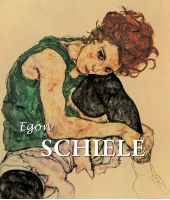 Egon Schiele’s work is so distinctive that it resists categorisation. Admitted to the Vienna Academy of Fine Arts at just sixteen, he was an extraordinarily precocious artist, whose consummate skill in the manipulation of line, above all, lent a taut expressivity to all his work. Profoundly convinced of his own significance as an artist, Schiele achieved more in his abruptly curtailed youth than many other artists achieved in a full lifetime. His roots were in the Jugendstil of the Viennese Secession movement. Like a whole generation, he came under the overwhelming influence of Vienna’s most charismatic and celebrated artist, Gustav Klimt. In turn, Klimt recognised Schiele’s outstanding talent and supported the young artist, who within just a couple of years, was already breaking away from his mentor’s decorative sensuality. Beginning with an intense period of creativity around 1910, Schiele embarked on an unflinching exposé of the human form – not the least his own – so penetrating that it is clear he was examining an anatomy more psychological, spiritual and emotional than physical. He painted many townscapes, landscapes, formal portraits and allegorical subjects, but it was his extremely candid works on paper, which are sometimes overtly erotic, together with his penchant for using under-age models that made Schiele vulnerable to censorious morality. In 1912, he was imprisoned on suspicion of a series of offences including kidnapping, rape and public immorality. The most serious charges (all but that of public immorality) were dropped, but Schiele spent around three despairing weeks in prison. Expressionist circles in Germany gave a lukewarm reception to Schiele’s work. His compatriot, Kokoschka, fared much better there. While he admired the Munich artists of Der Blaue Reiter, for example, they rebuffed him. Later, during the First World War, his work became better known and in 1916 he was featured in an issue of the left-wing, Berlin-based Expressionist magazine Die Aktion. Schiele was an acquired taste. From an early stage he was regarded as a genius. This won him the support of a small group of long-suffering collectors and admirers but, nonetheless, for several years of his life his finances were precarious. He was often in debt and sometimes he was forced to use cheap materials, painting on brown wrapping paper or cardboard instead of artists’ paper or canvas. It was only in 1918 that he enjoyed his first substantial public success in Vienna. Tragically, a short time later, he and his wife Edith were struck down by the massive influenza epidemic of 1918 that had just killed Klimt and millions of other victims, and they died within days of one another. Schiele was just twenty-eight years old. ... Далее
Egon Schiele’s work is so distinctive that it resists categorisation. Admitted to the Vienna Academy of Fine Arts at just sixteen, he was an extraordinarily precocious artist, whose consummate skill in the manipulation of line, above all, lent a taut expressivity to all his work. Profoundly convinced of his own significance as an artist, Schiele achieved more in his abruptly curtailed youth than many other artists achieved in a full lifetime. His roots were in the Jugendstil of the Viennese Secession movement. Like a whole generation, he came under the overwhelming influence of Vienna’s most charismatic and celebrated artist, Gustav Klimt. In turn, Klimt recognised Schiele’s outstanding talent and supported the young artist, who within just a couple of years, was already breaking away from his mentor’s decorative sensuality. Beginning with an intense period of creativity around 1910, Schiele embarked on an unflinching exposé of the human form – not the least his own – so penetrating that it is clear he was examining an anatomy more psychological, spiritual and emotional than physical. He painted many townscapes, landscapes, formal portraits and allegorical subjects, but it was his extremely candid works on paper, which are sometimes overtly erotic, together with his penchant for using under-age models that made Schiele vulnerable to censorious morality. In 1912, he was imprisoned on suspicion of a series of offences including kidnapping, rape and public immorality. The most serious charges (all but that of public immorality) were dropped, but Schiele spent around three despairing weeks in prison. Expressionist circles in Germany gave a lukewarm reception to Schiele’s work. His compatriot, Kokoschka, fared much better there. While he admired the Munich artists of Der Blaue Reiter, for example, they rebuffed him. Later, during the First World War, his work became better known and in 1916 he was featured in an issue of the left-wing, Berlin-based Expressionist magazine Die Aktion. Schiele was an acquired taste. From an early stage he was regarded as a genius. This won him the support of a small group of long-suffering collectors and admirers but, nonetheless, for several years of his life his finances were precarious. He was often in debt and sometimes he was forced to use cheap materials, painting on brown wrapping paper or cardboard instead of artists’ paper or canvas. It was only in 1918 that he enjoyed his first substantial public success in Vienna. Tragically, a short time later, he and his wife Edith were struck down by the massive influenza epidemic of 1918 that had just killed Klimt and millions of other victims, and they died within days of one another. Schiele was just twenty-eight years old. ... Далее -
2.
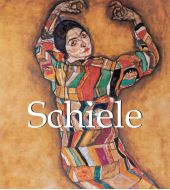 Egon Schiele’s work is so distinctive that it resists categorisation. Admitted to the Vienna Academy of Fine Arts at just sixteen, he was an extraordinarily precocious artist, whose consummate skill in the manipulation of line, above all, lent a taut expressivity to all his work. Profoundly convinced of his own significance as an artist, Schiele achieved more in his abruptly curtailed youth than many other artists achieved in a full lifetime. His roots were in the Jugendstil of the Viennese Secession movement. Like a whole generation, he came under the overwhelming influence of Vienna’s most charismatic and celebrated artist, Gustav Klimt. In turn, Klimt recognised Schiele’s outstanding talent and supported the young artist, who within just a couple of years, was already breaking away from his mentor’s decorative sensuality. Beginning with an intense period of creativity around 1910, Schiele embarked on an unflinching exposé of the human form – not the least his own – so penetrating that it is clear he was examining an anatomy more psychological, spiritual and emotional than physical. He painted many townscapes, landscapes, formal portraits and allegorical subjects, but it was his extremely candid works on paper, which are sometimes overtly erotic, together with his penchant for using under-age models that made Schiele vulnerable to censorious morality. In 1912, he was imprisoned on suspicion of a series of offences including kidnapping, rape and public immorality. The most serious charges (all but that of public immorality) were dropped, but Schiele spent around three despairing weeks in prison. Expressionist circles in Germany gave a lukewarm reception to Schiele’s work. His compatriot, Kokoschka, fared much better there. While he admired the Munich artists of Der Blaue Reiter, for example, they rebuffed him. Later, during the First World War, his work became better known and in 1916 he was featured in an issue of the left-wing, Berlin-based Expressionist magazine Die Aktion. Schiele was an acquired taste. From an early stage he was regarded as a genius. This won him the support of a small group of long-suffering collectors and admirers but, nonetheless, for several years of his life his finances were precarious. He was often in debt and sometimes he was forced to use cheap materials, painting on brown wrapping paper or cardboard instead of artists’ paper or canvas. It was only in 1918 that he enjoyed his first substantial public success in Vienna. Tragically, a short time later, he and his wife Edith were struck down by the massive influenza epidemic of 1918 that had just killed Klimt and millions of other victims, and they died within days of one another. Schiele was just twenty-eight years old. ... Далее
Egon Schiele’s work is so distinctive that it resists categorisation. Admitted to the Vienna Academy of Fine Arts at just sixteen, he was an extraordinarily precocious artist, whose consummate skill in the manipulation of line, above all, lent a taut expressivity to all his work. Profoundly convinced of his own significance as an artist, Schiele achieved more in his abruptly curtailed youth than many other artists achieved in a full lifetime. His roots were in the Jugendstil of the Viennese Secession movement. Like a whole generation, he came under the overwhelming influence of Vienna’s most charismatic and celebrated artist, Gustav Klimt. In turn, Klimt recognised Schiele’s outstanding talent and supported the young artist, who within just a couple of years, was already breaking away from his mentor’s decorative sensuality. Beginning with an intense period of creativity around 1910, Schiele embarked on an unflinching exposé of the human form – not the least his own – so penetrating that it is clear he was examining an anatomy more psychological, spiritual and emotional than physical. He painted many townscapes, landscapes, formal portraits and allegorical subjects, but it was his extremely candid works on paper, which are sometimes overtly erotic, together with his penchant for using under-age models that made Schiele vulnerable to censorious morality. In 1912, he was imprisoned on suspicion of a series of offences including kidnapping, rape and public immorality. The most serious charges (all but that of public immorality) were dropped, but Schiele spent around three despairing weeks in prison. Expressionist circles in Germany gave a lukewarm reception to Schiele’s work. His compatriot, Kokoschka, fared much better there. While he admired the Munich artists of Der Blaue Reiter, for example, they rebuffed him. Later, during the First World War, his work became better known and in 1916 he was featured in an issue of the left-wing, Berlin-based Expressionist magazine Die Aktion. Schiele was an acquired taste. From an early stage he was regarded as a genius. This won him the support of a small group of long-suffering collectors and admirers but, nonetheless, for several years of his life his finances were precarious. He was often in debt and sometimes he was forced to use cheap materials, painting on brown wrapping paper or cardboard instead of artists’ paper or canvas. It was only in 1918 that he enjoyed his first substantial public success in Vienna. Tragically, a short time later, he and his wife Edith were struck down by the massive influenza epidemic of 1918 that had just killed Klimt and millions of other victims, and they died within days of one another. Schiele was just twenty-eight years old. ... Далее -
3.
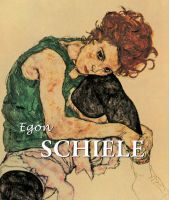 Egon Schiele(Tulln, 1890 – Vienne,1918) L’oeuvre d’Egon Schiele est tellement singulière qu’elle résiste à toute catégorisation. Admis à l’Académie des Beaux-Arts de Vienne dès l’âge de seize ans, ce fut un artiste extraordinairement précoce, dont le talent consommé pour le maniement de la ligne, plus que tout autre chose, conférait une tension expressive à toute son oeuvre. Profondément convaincu de sa propre importance en tant qu’artiste, Schiele réalisa plus de choses dans sa jeunesse, brutalement abrégée, que beaucoup d’artistes dans toute leur existence. Ses racines puisaient dans le Jugendstil du mouvement de la Sécession Viennoise. Comme toute sa génération, il tomba sous l’influence écrasante de l’artiste le plus illustre et charismatique de Vienne, Gustav Klimt. A son tour, Klimt reconnut le remarquable talent de Schiele et encouragea le jeune artiste, qui au bout de deux ans, rompait déjà avec la sensualité décorative de son mentor. Amorçant une intense période de créativité vers 1910, Schiele entama un intrépide exposé de la forme humaine – sans oublier la sienne – si pénétrant, qu’il est clair que l’examen auquel il se livrait était plus psychologique, spirituel et émotionnel, que physique. Il peignit plusieurs vues urbaines, paysages, portraits formels et sujets allégoriques, mais ce sont ses oeuvres sur papier, extrêmement candides, parfois ouvertement érotiques, et son penchant pour les modèles trop jeunes, qui rendirent Schiele vulnérable à la critique morale. En 1912, il fut soupçonné et emprisonné pour une série d’atteintes aux moeurs incluant le kidnapping, le viol et la débauche publique. Les accusations les plus graves (toutes sauf celle de débauche publique) furent abandonnées, mais Schiele passa environ trois semaines désespérées en prison. En Allemagne, les cercles expressionnistes offrirent un accueil tiède au travail de Schiele. Son compatriote, Kokoschka, réussissait beaucoup mieux dans ce domaine. Tandis qu’il admirait les artistes munichois du Blaue Reiter, par exemple, ceux-ci le repoussaient. Plus tard, pendant la Première Guerre mondiale, son oeuvre se fit mieux connaître et, en 1916, Schiele fut présenté dans un numéro de magazine expressionniste de gauche, basé à Berlin, Die Aktion, et on finit par l’apprécier. Il fut considéré très tôt comme un génie. Cela lui valut le soutien d’un petit groupe de collectionneurs et d’admirateurs très patients. Néanmoins, pendant plusieurs années, ses finances furent précaires. Il avait souvent des dettes et était parfois forcé d’utiliser du matériel bon marché, de peindre sur du papier d’emballage marron ou du carton, au lieu du papier et des toiles réservés aux artistes. Ce n’est qu’en 1918, qu’il connut son premier succès public notable à Vienne. Tragiquement, quelque temps plus tard, il fut emporté avec sa femme, Edith, par l’épidémie massive de grippe de 1918, qui venait de tuer Klimt et des millions d’autres victimes, et ils moururent à quelques jours d’intervalle. Schiele n’avait que vingt-huit ans. ... Далее
Egon Schiele(Tulln, 1890 – Vienne,1918) L’oeuvre d’Egon Schiele est tellement singulière qu’elle résiste à toute catégorisation. Admis à l’Académie des Beaux-Arts de Vienne dès l’âge de seize ans, ce fut un artiste extraordinairement précoce, dont le talent consommé pour le maniement de la ligne, plus que tout autre chose, conférait une tension expressive à toute son oeuvre. Profondément convaincu de sa propre importance en tant qu’artiste, Schiele réalisa plus de choses dans sa jeunesse, brutalement abrégée, que beaucoup d’artistes dans toute leur existence. Ses racines puisaient dans le Jugendstil du mouvement de la Sécession Viennoise. Comme toute sa génération, il tomba sous l’influence écrasante de l’artiste le plus illustre et charismatique de Vienne, Gustav Klimt. A son tour, Klimt reconnut le remarquable talent de Schiele et encouragea le jeune artiste, qui au bout de deux ans, rompait déjà avec la sensualité décorative de son mentor. Amorçant une intense période de créativité vers 1910, Schiele entama un intrépide exposé de la forme humaine – sans oublier la sienne – si pénétrant, qu’il est clair que l’examen auquel il se livrait était plus psychologique, spirituel et émotionnel, que physique. Il peignit plusieurs vues urbaines, paysages, portraits formels et sujets allégoriques, mais ce sont ses oeuvres sur papier, extrêmement candides, parfois ouvertement érotiques, et son penchant pour les modèles trop jeunes, qui rendirent Schiele vulnérable à la critique morale. En 1912, il fut soupçonné et emprisonné pour une série d’atteintes aux moeurs incluant le kidnapping, le viol et la débauche publique. Les accusations les plus graves (toutes sauf celle de débauche publique) furent abandonnées, mais Schiele passa environ trois semaines désespérées en prison. En Allemagne, les cercles expressionnistes offrirent un accueil tiède au travail de Schiele. Son compatriote, Kokoschka, réussissait beaucoup mieux dans ce domaine. Tandis qu’il admirait les artistes munichois du Blaue Reiter, par exemple, ceux-ci le repoussaient. Plus tard, pendant la Première Guerre mondiale, son oeuvre se fit mieux connaître et, en 1916, Schiele fut présenté dans un numéro de magazine expressionniste de gauche, basé à Berlin, Die Aktion, et on finit par l’apprécier. Il fut considéré très tôt comme un génie. Cela lui valut le soutien d’un petit groupe de collectionneurs et d’admirateurs très patients. Néanmoins, pendant plusieurs années, ses finances furent précaires. Il avait souvent des dettes et était parfois forcé d’utiliser du matériel bon marché, de peindre sur du papier d’emballage marron ou du carton, au lieu du papier et des toiles réservés aux artistes. Ce n’est qu’en 1918, qu’il connut son premier succès public notable à Vienne. Tragiquement, quelque temps plus tard, il fut emporté avec sa femme, Edith, par l’épidémie massive de grippe de 1918, qui venait de tuer Klimt et des millions d’autres victimes, et ils moururent à quelques jours d’intervalle. Schiele n’avait que vingt-huit ans. ... Далее -
4.
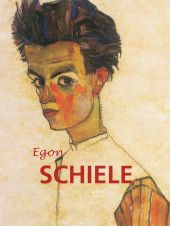 Egon Schiele(Tulln, 1890 – Vienne,1918) L’oeuvre d’Egon Schiele est tellement singulière qu’elle résiste à toute catégorisation. Admis à l’Académie des Beaux-Arts de Vienne dès l’âge de seize ans, ce fut un artiste extraordinairement précoce, dont le talent consommé pour le maniement de la ligne, plus que tout autre chose, conférait une tension expressive à toute son oeuvre. Profondément convaincu de sa propre importance en tant qu’artiste, Schiele réalisa plus de choses dans sa jeunesse, brutalement abrégée, que beaucoup d’artistes dans toute leur existence. Ses racines puisaient dans le Jugendstil du mouvement de la Sécession Viennoise. Comme toute sa génération, il tomba sous l’influence écrasante de l’artiste le plus illustre et charismatique de Vienne, Gustav Klimt. A son tour, Klimt reconnut le remarquable talent de Schiele et encouragea le jeune artiste, qui au bout de deux ans, rompait déjà avec la sensualité décorative de son mentor. Amorçant une intense période de créativité vers 1910, Schiele entama un intrépide exposé de la forme humaine – sans oublier la sienne – si pénétrant, qu’il est clair que l’examen auquel il se livrait était plus psychologique, spirituel et émotionnel, que physique. Il peignit plusieurs vues urbaines, paysages, portraits formels et sujets allégoriques, mais ce sont ses oeuvres sur papier, extrêmement candides, parfois ouvertement érotiques, et son penchant pour les modèles trop jeunes, qui rendirent Schiele vulnérable à la critique morale. En 1912, il fut soupçonné et emprisonné pour une série d’atteintes aux moeurs incluant le kidnapping, le viol et la débauche publique. Les accusations les plus graves (toutes sauf celle de débauche publique) furent abandonnées, mais Schiele passa environ trois semaines désespérées en prison. En Allemagne, les cercles expressionnistes offrirent un accueil tiède au travail de Schiele. Son compatriote, Kokoschka, réussissait beaucoup mieux dans ce domaine. Tandis qu’il admirait les artistes munichois du Blaue Reiter, par exemple, ceux-ci le repoussaient. Plus tard, pendant la Première Guerre mondiale, son oeuvre se fit mieux connaître et, en 1916, Schiele fut présenté dans un numéro de magazine expressionniste de gauche, basé à Berlin, Die Aktion, et on finit par l’apprécier. Il fut considéré très tôt comme un génie. Cela lui valut le soutien d’un petit groupe de collectionneurs et d’admirateurs très patients. Néanmoins, pendant plusieurs années, ses finances furent précaires. Il avait souvent des dettes et était parfois forcé d’utiliser du matériel bon marché, de peindre sur du papier d’emballage marron ou du carton, au lieu du papier et des toiles réservés aux artistes. Ce n’est qu’en 1918, qu’il connut son premier succès public notable à Vienne. Tragiquement, quelque temps plus tard, il fut emporté avec sa femme, Edith, par l’épidémie massive de grippe de 1918, qui venait de tuer Klimt et des millions d’autres victimes, et ils moururent à quelques jours d’intervalle. Schiele n’avait que vingt-huit ans. ... Далее
Egon Schiele(Tulln, 1890 – Vienne,1918) L’oeuvre d’Egon Schiele est tellement singulière qu’elle résiste à toute catégorisation. Admis à l’Académie des Beaux-Arts de Vienne dès l’âge de seize ans, ce fut un artiste extraordinairement précoce, dont le talent consommé pour le maniement de la ligne, plus que tout autre chose, conférait une tension expressive à toute son oeuvre. Profondément convaincu de sa propre importance en tant qu’artiste, Schiele réalisa plus de choses dans sa jeunesse, brutalement abrégée, que beaucoup d’artistes dans toute leur existence. Ses racines puisaient dans le Jugendstil du mouvement de la Sécession Viennoise. Comme toute sa génération, il tomba sous l’influence écrasante de l’artiste le plus illustre et charismatique de Vienne, Gustav Klimt. A son tour, Klimt reconnut le remarquable talent de Schiele et encouragea le jeune artiste, qui au bout de deux ans, rompait déjà avec la sensualité décorative de son mentor. Amorçant une intense période de créativité vers 1910, Schiele entama un intrépide exposé de la forme humaine – sans oublier la sienne – si pénétrant, qu’il est clair que l’examen auquel il se livrait était plus psychologique, spirituel et émotionnel, que physique. Il peignit plusieurs vues urbaines, paysages, portraits formels et sujets allégoriques, mais ce sont ses oeuvres sur papier, extrêmement candides, parfois ouvertement érotiques, et son penchant pour les modèles trop jeunes, qui rendirent Schiele vulnérable à la critique morale. En 1912, il fut soupçonné et emprisonné pour une série d’atteintes aux moeurs incluant le kidnapping, le viol et la débauche publique. Les accusations les plus graves (toutes sauf celle de débauche publique) furent abandonnées, mais Schiele passa environ trois semaines désespérées en prison. En Allemagne, les cercles expressionnistes offrirent un accueil tiède au travail de Schiele. Son compatriote, Kokoschka, réussissait beaucoup mieux dans ce domaine. Tandis qu’il admirait les artistes munichois du Blaue Reiter, par exemple, ceux-ci le repoussaient. Plus tard, pendant la Première Guerre mondiale, son oeuvre se fit mieux connaître et, en 1916, Schiele fut présenté dans un numéro de magazine expressionniste de gauche, basé à Berlin, Die Aktion, et on finit par l’apprécier. Il fut considéré très tôt comme un génie. Cela lui valut le soutien d’un petit groupe de collectionneurs et d’admirateurs très patients. Néanmoins, pendant plusieurs années, ses finances furent précaires. Il avait souvent des dettes et était parfois forcé d’utiliser du matériel bon marché, de peindre sur du papier d’emballage marron ou du carton, au lieu du papier et des toiles réservés aux artistes. Ce n’est qu’en 1918, qu’il connut son premier succès public notable à Vienne. Tragiquement, quelque temps plus tard, il fut emporté avec sa femme, Edith, par l’épidémie massive de grippe de 1918, qui venait de tuer Klimt et des millions d’autres victimes, et ils moururent à quelques jours d’intervalle. Schiele n’avait que vingt-huit ans. ... Далее -
5.
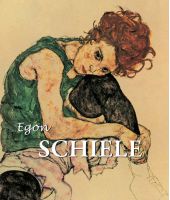 Pornografisch, unsittlich, amoralisch und letztendlich sogar „entartet“ wurde die Kunst des Egon Schiele genannt. Lange Zeit verkannt und verunglimpft, hat der geniale, von Selbstobsession getriebene Künstler dennoch unbeirrt seine künstlerische Suche nach der Essenz der weiblichen Sexualität und nach einer neuen, ausgeglichenen Selbstwahrnehmung fortgesetzt; eine Suche, die in einer Vielzahl von Selbstporträts und Aktzeichnungen zum Ausdruck gebracht wurde. Dieser Band bemüht sich darum, die volle künstlerische Bandbreite des Künstlers zu erfassen, seine bekannten Porträts, Akte und Selbstporträts mit seinen weniger bekannten Landschafts –und Städtebildern zu kontrastieren und einen Einblick in die Seele des umstrittenen Österreichers zu bieten. ... Далее
Pornografisch, unsittlich, amoralisch und letztendlich sogar „entartet“ wurde die Kunst des Egon Schiele genannt. Lange Zeit verkannt und verunglimpft, hat der geniale, von Selbstobsession getriebene Künstler dennoch unbeirrt seine künstlerische Suche nach der Essenz der weiblichen Sexualität und nach einer neuen, ausgeglichenen Selbstwahrnehmung fortgesetzt; eine Suche, die in einer Vielzahl von Selbstporträts und Aktzeichnungen zum Ausdruck gebracht wurde. Dieser Band bemüht sich darum, die volle künstlerische Bandbreite des Künstlers zu erfassen, seine bekannten Porträts, Akte und Selbstporträts mit seinen weniger bekannten Landschafts –und Städtebildern zu kontrastieren und einen Einblick in die Seele des umstrittenen Österreichers zu bieten. ... Далее -
6.
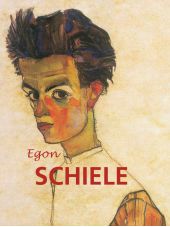 Pornografisch, unsittlich, amoralisch und letztendlich sogar „entartet“ wurde die Kunst des Egon Schiele genannt. Lange Zeit verkannt und verunglimpft, hat der geniale, von Selbstobsession getriebene Künstler dennoch unbeirrt seine künstlerische Suche nach der Essenz der weiblichen Sexualität und nach einer neuen, ausgeglichenen Selbstwahrnehmung fortgesetzt; eine Suche, die in einer Vielzahl von Selbstporträts und Aktzeichnungen zum Ausdruck gebracht wurde. Dieser Band bemüht sich darum, die volle künstlerische Bandbreite des Künstlers zu erfassen, seine bekannten Porträts, Akte und Selbstporträts mit seinen weniger bekannten Landschafts –und Städtebildern zu kontrastieren und einen Einblick in die Seele des umstrittenen Österreichers zu bieten. ... Далее
Pornografisch, unsittlich, amoralisch und letztendlich sogar „entartet“ wurde die Kunst des Egon Schiele genannt. Lange Zeit verkannt und verunglimpft, hat der geniale, von Selbstobsession getriebene Künstler dennoch unbeirrt seine künstlerische Suche nach der Essenz der weiblichen Sexualität und nach einer neuen, ausgeglichenen Selbstwahrnehmung fortgesetzt; eine Suche, die in einer Vielzahl von Selbstporträts und Aktzeichnungen zum Ausdruck gebracht wurde. Dieser Band bemüht sich darum, die volle künstlerische Bandbreite des Künstlers zu erfassen, seine bekannten Porträts, Akte und Selbstporträts mit seinen weniger bekannten Landschafts –und Städtebildern zu kontrastieren und einen Einblick in die Seele des umstrittenen Österreichers zu bieten. ... Далее -
7.
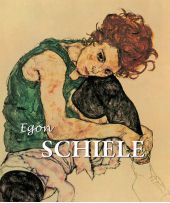 Egon Schiele’s work is so distinctive that it resists categorisation. Admitted to the Vienna Academy of Fine Arts at just sixteen, he was an extraordinarily precocious artist, whose consummate skill in the manipulation of line, above all, lent a taut expressivity to all his work. Profoundly convinced of his own significance as an artist, Schiele achieved more in his abruptly curtailed youth than many other artists achieved in a full lifetime. His roots were in the Jugendstil of the Viennese Secession movement. Like a whole generation, he came under the overwhelming influence of Vienna’s most charismatic and celebrated artist, Gustav Klimt. In turn, Klimt recognised Schiele’s outstanding talent and supported the young artist, who within just a couple of years, was already breaking away from his mentor’s decorative sensuality. Beginning with an intense period of creativity around 1910, Schiele embarked on an unflinching exposé of the human form – not the least his own – so penetrating that it is clear he was examining an anatomy more psychological, spiritual and emotional than physical. He painted many townscapes, landscapes, formal portraits and allegorical subjects, but it was his extremely candid works on paper, which are sometimes overtly erotic, together with his penchant for using under-age models that made Schiele vulnerable to censorious morality. In 1912, he was imprisoned on suspicion of a series of offences including kidnapping, rape and public immorality. The most serious charges (all but that of public immorality) were dropped, but Schiele spent around three despairing weeks in prison. Expressionist circles in Germany gave a lukewarm reception to Schiele’s work. His compatriot, Kokoschka, fared much better there. While he admired the Munich artists of Der Blaue Reiter, for example, they rebuffed him. Later, during the First World War, his work became better known and in 1916 he was featured in an issue of the left-wing, Berlin-based Expressionist magazine Die Aktion. Schiele was an acquired taste. From an early stage he was regarded as a genius. This won him the support of a small group of long-suffering collectors and admirers but, nonetheless, for several years of his life his finances were precarious. He was often in debt and sometimes he was forced to use cheap materials, painting on brown wrapping paper or cardboard instead of artists’ paper or canvas. It was only in 1918 that he enjoyed his first substantial public success in Vienna. Tragically, a short time later, he and his wife Edith were struck down by the massive influenza epidemic of 1918 that had just killed Klimt and millions of other victims, and they died within days of one another. Schiele was just twenty-eight years old. ... Далее
Egon Schiele’s work is so distinctive that it resists categorisation. Admitted to the Vienna Academy of Fine Arts at just sixteen, he was an extraordinarily precocious artist, whose consummate skill in the manipulation of line, above all, lent a taut expressivity to all his work. Profoundly convinced of his own significance as an artist, Schiele achieved more in his abruptly curtailed youth than many other artists achieved in a full lifetime. His roots were in the Jugendstil of the Viennese Secession movement. Like a whole generation, he came under the overwhelming influence of Vienna’s most charismatic and celebrated artist, Gustav Klimt. In turn, Klimt recognised Schiele’s outstanding talent and supported the young artist, who within just a couple of years, was already breaking away from his mentor’s decorative sensuality. Beginning with an intense period of creativity around 1910, Schiele embarked on an unflinching exposé of the human form – not the least his own – so penetrating that it is clear he was examining an anatomy more psychological, spiritual and emotional than physical. He painted many townscapes, landscapes, formal portraits and allegorical subjects, but it was his extremely candid works on paper, which are sometimes overtly erotic, together with his penchant for using under-age models that made Schiele vulnerable to censorious morality. In 1912, he was imprisoned on suspicion of a series of offences including kidnapping, rape and public immorality. The most serious charges (all but that of public immorality) were dropped, but Schiele spent around three despairing weeks in prison. Expressionist circles in Germany gave a lukewarm reception to Schiele’s work. His compatriot, Kokoschka, fared much better there. While he admired the Munich artists of Der Blaue Reiter, for example, they rebuffed him. Later, during the First World War, his work became better known and in 1916 he was featured in an issue of the left-wing, Berlin-based Expressionist magazine Die Aktion. Schiele was an acquired taste. From an early stage he was regarded as a genius. This won him the support of a small group of long-suffering collectors and admirers but, nonetheless, for several years of his life his finances were precarious. He was often in debt and sometimes he was forced to use cheap materials, painting on brown wrapping paper or cardboard instead of artists’ paper or canvas. It was only in 1918 that he enjoyed his first substantial public success in Vienna. Tragically, a short time later, he and his wife Edith were struck down by the massive influenza epidemic of 1918 that had just killed Klimt and millions of other victims, and they died within days of one another. Schiele was just twenty-eight years old. ... Далее
Комментарии:


